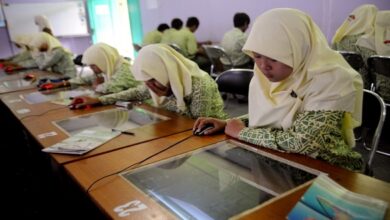COMMUNITIES OF PRACTICE IN HIGHER EDUCATION

INTRODUCTION
Academic universities and universities of professional education are currently in the midst of modernizing their education to better suit the demands of present and future students. Higher education is becoming more vocational and occupationally-orientated: there is more and more interest in (learning) the application of theories and concepts.
This requires a new approach in the coaching of learning processes. Demand-driven, the exchange of experiences and collaborative learning (community-learning) seem to be promising elements when giving shape to modernization.
WHAT IS A COMMUNITY OF PRACTICE?
A CoP is a group of people who share a (great) interest in a certain subject or theme. They meet to exchange, develop and make explicit knowledge, which arises from questions and problems they have. CoPs can be initiated by individual staff members, experts or by teams and exist thanks to the ‘give and take’ attitude of the participants. Participants are usually active: formulating a problem or learning-question, giving feedback, asking questions, giving tips or answers, supplying literature, etc.
CoPs can differ in method of working (formal with agendas or informal), accessibility (open/closed) and size. These aspects are related to the extent to which it is important to know one another (trust) and the wish to cooperatively – as a community – apart from sharing experiences, also develop knowledge. Knowledge-development requires trust and this best grows in a small community or in a secluded part of a larger community.
COP’S AND THEIR BENEFITS
Communities ought to have a place in every leaking organization. Organizations that support learning score highly on two dimensions:
- Organizational dimension: the extent to which the structure and culture of the organization support and stimulate leaking, for example via a clear mission through which learning-processes gain a focus, management offering solid support for methods such as coaching and reflection, being open-minded towards new ideas.
- Personal dimension: the extent to which staff are self-confident, motivated and able to loam. This can be seen in an open-minded attitude and a willingness to loam.
If both the organizational and personal dimensions tum out to be positive then there is a safe environment within which staff can cooperatively loam from experiences and new ideas can be formed, focused on the mission and strategy of the organization. Whenever people come together in the context of their work with such an open-minded attitude, the organization as a whole benefits.
SUCCESS-FACTORS COMMUNITIES OF PRACTICE
Within our university there is gradual recognition of the importance of communities in educational innovation: managers approach communities for advice on policy. Staff functioning in multidisciplinary teams seek out communities, depending on their learning needs.
Success-Factors
The way in which the organization carries out this cultivation can vary greatly and depends on the type of, and innovative character of, said organization. Certain organizations strongly steer towards the form and setup of a Cop, for example a company such as Unilever that needs new products in order to survive is therefore greatly benefited by ‘innovative’ communities. But there are also organizations that only create the minimally required preconditions and master the art of working, learning and innovating collaboratively as they go: educational organizations seem to be best catered for by bottom-up initiatives and top-down facilitation.
CONCLUSION
Above we provided a description of what Communities of Practice are, what benefits they bring for individual and educational organisation and which success-factors can improve learning and working in communities. Communities of Practice can play an important role in the exchange, development and making explicit of new knowledge.




